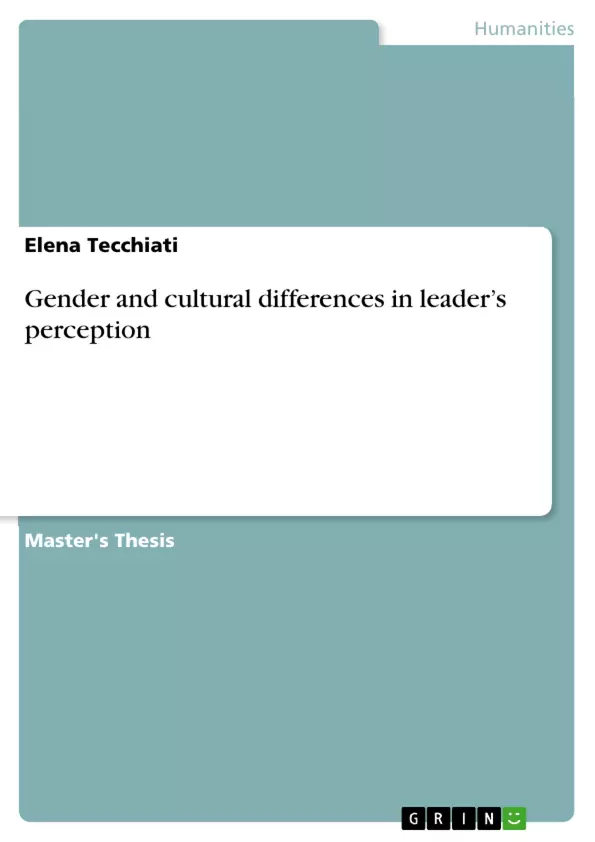The objective of this study is to evaluate the gender and cultural differences in the perception of a male and a female leader in a feedback situation. The research is based upon considerations of a literature review in the fields of gender bias and stereotype conducted previously. Subjects from Spain and Germany were asked to evaluate a director (male or female) of a fictive feedback situation that was described before a short questionnaire.
The questions of the questionnaire were based on previous research and findings of the literature review. Results show no significance differences in the evaluation across genders and cultures. We tested if previous experience with a woman leader was related to a higher evaluation of the female leader finding no significant relationship. We tested if there was a relationship between the previous experience with a female leader and the preference to work for a certain leader’s gender finding no significant relationship. Taking into consideration the subgroup “previous experience with a female leader”, we analyzed if personnel responsibility was related to the preference to work for a certain leader’s gender finding no relationship. Results from the study show that gender, culture and previous experience with a female leader had no influence on the leader’s evaluation. A discussion with possible interpretations of the findings and implication for further research follows.
Inhaltsverzeichnis (Table of Contents)
- Introduction
- Literature Review
- Gender Bias
- Cultural Differences
- Stereotype
- Method
- Participants
- Materials
- Procedure
- Results
- Evaluation of the Leader
- Experience with Female Leaders
- Personnel Responsibility
- Discussion
Zielsetzung und Themenschwerpunkte (Objectives and Key Themes)
This study aims to investigate gender and cultural differences in perceptions of a female leader within a feedback situation. It draws upon previous research on gender bias and stereotypes to explore how individuals from Spain and Germany perceive the effectiveness of a male or female leader in a fictional scenario.
- Gender Bias in Leadership
- Cultural Differences in Leader Perception
- Stereotypical Perceptions of Female Leaders
- The "Glass Ceiling" Effect
- The Influence of Previous Experience with Female Leaders
Zusammenfassung der Kapitel (Chapter Summaries)
The introduction sets the stage for the study by highlighting the prevalent gender bias in leadership roles and the limited research on intercultural differences in perceiving female leaders. It emphasizes the "glass ceiling" effect and the double-bind trap women face, discussing various explanations for these phenomena. The literature review delves into existing research on gender bias, cultural differences, and stereotypes, providing a foundation for the study's investigation.
- Citar trabajo
- Elena Tecchiati (Autor), 2014, Gender and cultural differences in leader’s perception, Múnich, GRIN Verlag, https://www.grin.com/document/284518



